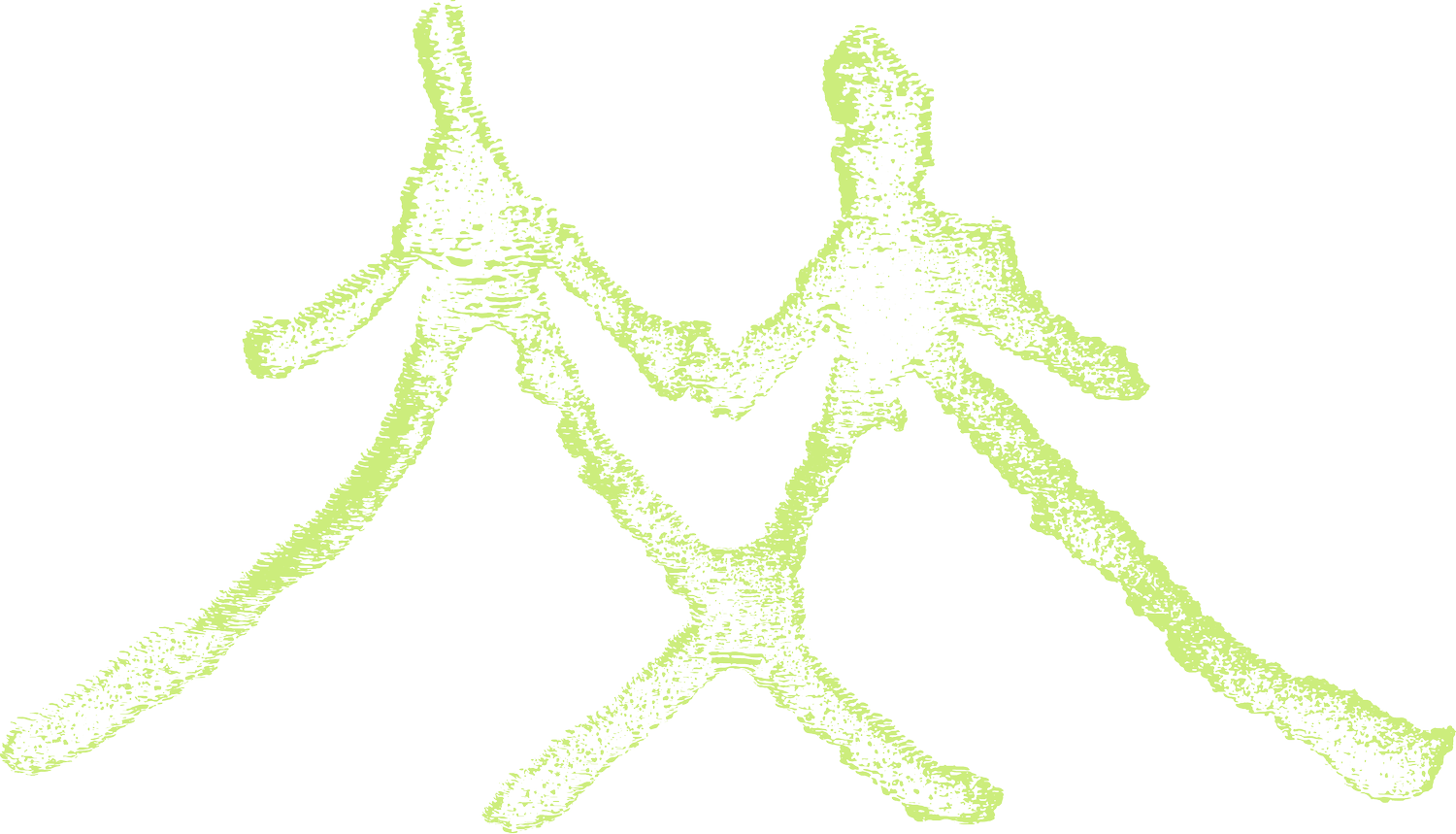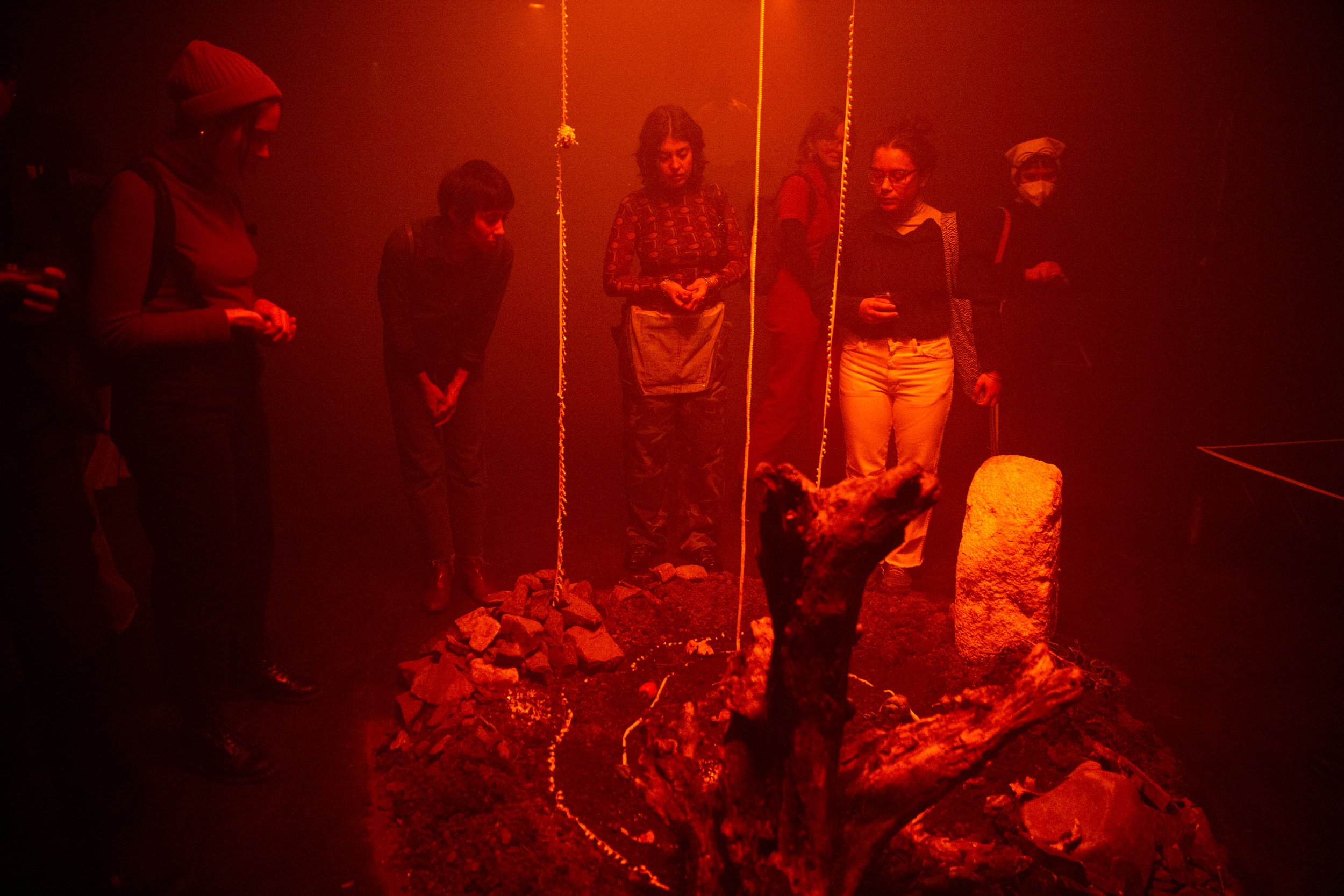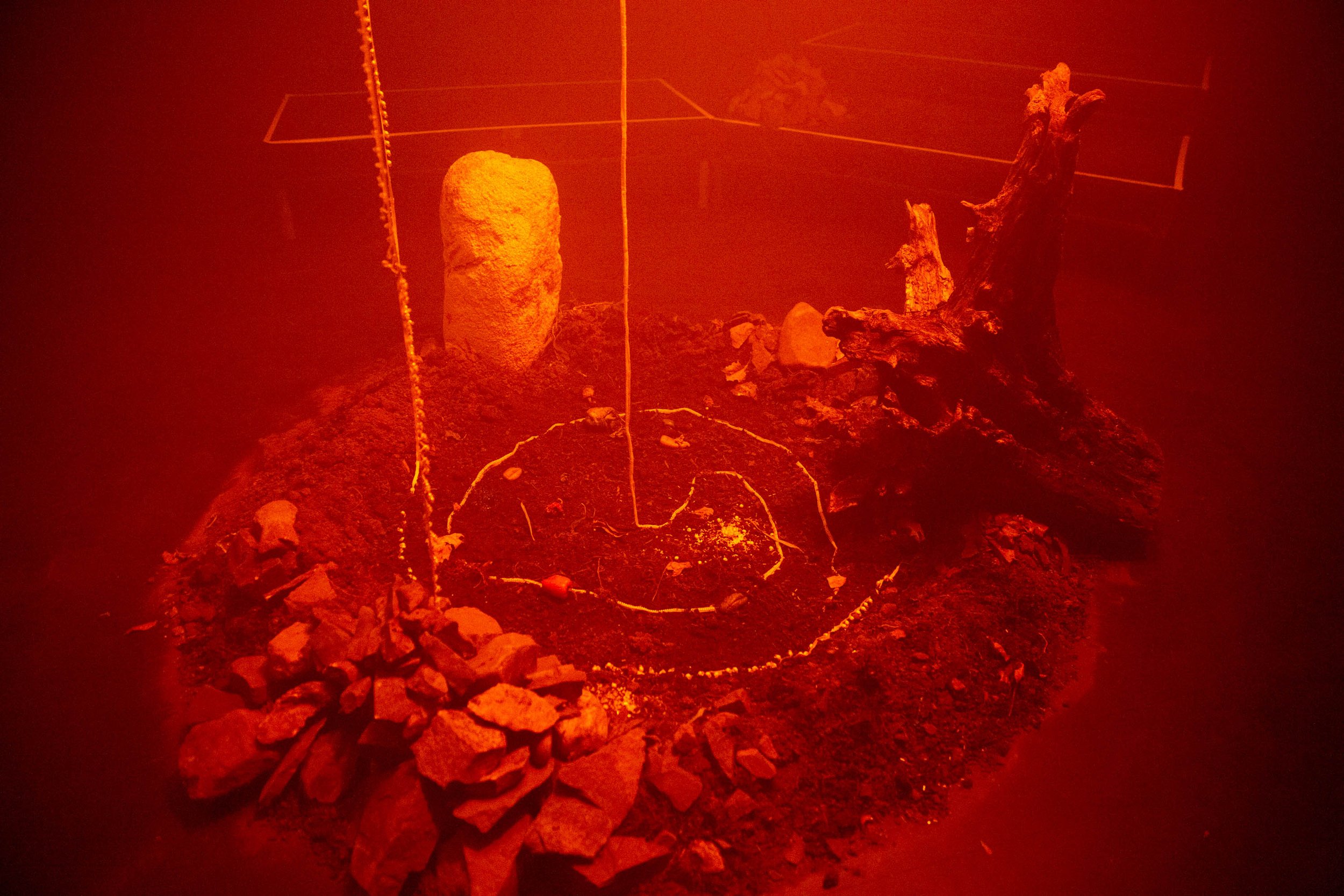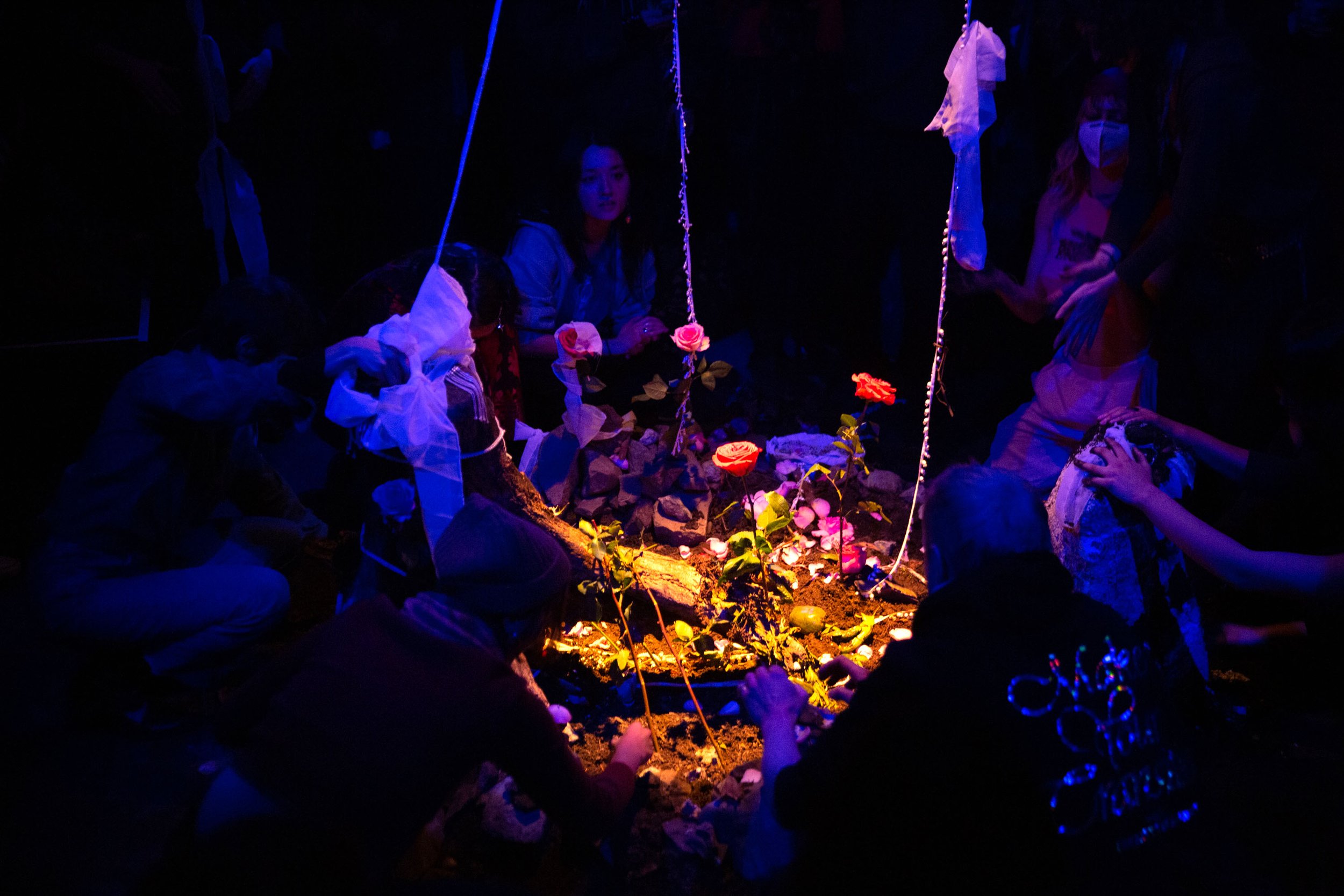
In the Valley Pools our Sorrow
In the Valley Pools our Sorrow was an experimental nightclub dedicated to carving out a collective space for sanity & emotion. Commissioned by Performance Space New York, the project was a resource for people living in a world possessed by extraordinary change & turmoil—climate crisis, political upheaval, & an ongoing pandemic. Amidst these conditions, capitalist expectations for unceasing production persist, driving us to continue without pause, in spite of pain, grief, or exhaustion. In the Valley was created as a space to pause and feel together; as a vessel to honor our sorrow, anger, hope, exhaustion, & our drive to keep trying.
The night took place inside a constructed landscape of tiered platforms, plants & stone, cascading into an interactive centerpiece of foraged materials. NYC-based DJ Akanbi led a 2-hour sonic journey, moving from soft, contemplative sound into intense, bassy techno. Movement artists Aarron Ricks & Ley sculpted an improvisational movement score, guiding the collective arc of interaction & dance.
As the night went on, participants danced, reclined, embraced & yelled, emotions bubbling out organically. In what one participant deemed “a ritual with no name,” people played with soil, flowers, ribbons, stone—weaving, squashing, burying & gifting materials. The materials themselves each carried their own signatures: stone shards from New Jersey’s Palisades Cliffs, a decapitated tree stump from the side of a local highway, soil from an urban immigrant family garden. Altogether, the project repositions essential elements of the club experience—deep listening, collective movement, & catharsis—using these to create a momentary balm, a valley carved out in the midst of the city.
Partners Akanbi, Aarron Ricks, Ley
Photography Mengwen Cao
Media Livestream, Reel
Location Performance Space New York
Year 2022

“The experience felt so, so safe for me. I felt like I could be whatever my being is. I could dance, I could stand still, I could close my eyes, I could cry, I could laugh, and I could not be judged. How many places in this city, in this world, can one really say that about?”
—Mzwakhe Ndlovu, architect
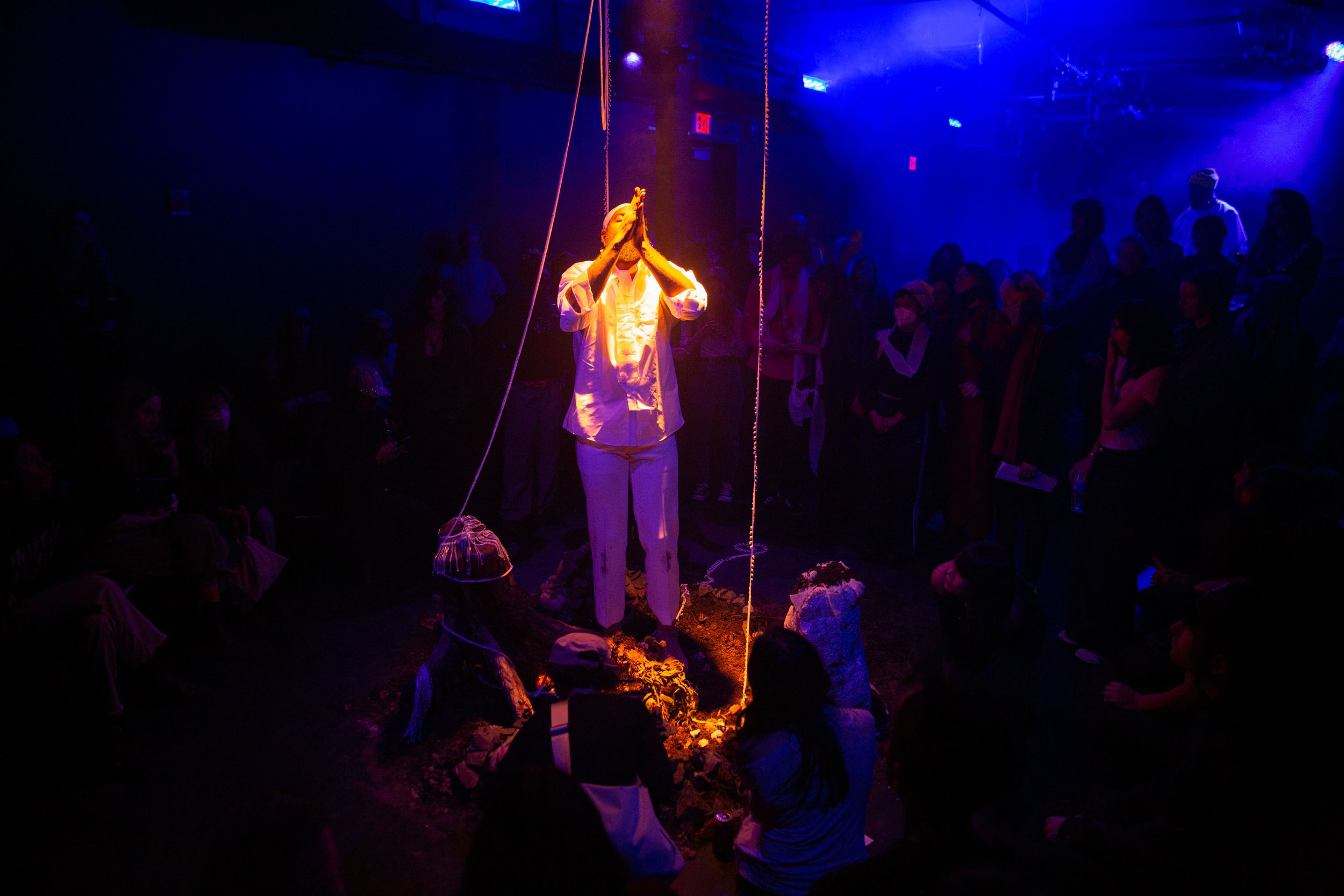
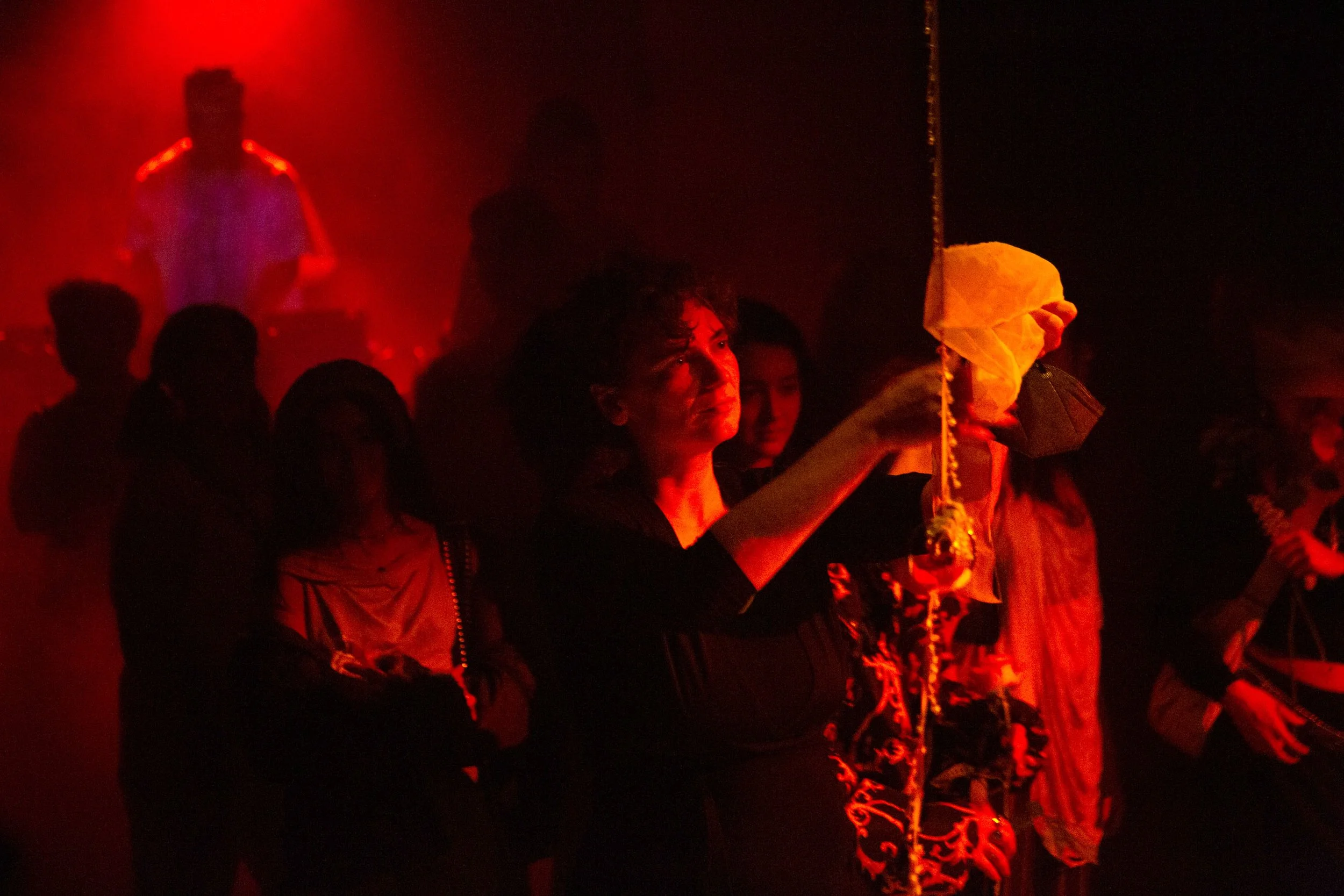
“In the Valley Pools Our Sorrow tells an urban secret: that it is within the permanent impermeability of a black box theater on 1st Ave and out of the magnificent machination of sound, beat, fluorescence, fog, and human movement that we may most willingly receive the friability of nature as a cultural entity.
Off-site but indoors, we are lended the weight of stones, the particleness of earth, the haptic lines of plants – in other words, the objects of nature minus their roots, relics of a rhizomatic world readily available to our pulse and impulse to play. Amidst this theater of life suspended, two tall dancers enact a ritual with no name, ushering a narrative of movement, and thus occasioning a public intimacy that lodges its secret in the moves of each participant.
Therein lies the genus and genius of Nocturnal Medicine: to create a haven that is not an Eden, that does not renege its own artifice, that grasps the paradox of a most contemporary queer space, namely that the desire for visibility cohabits with that for opacity. As the lights pump their last breath, we step out of a velvety dark corner and tuck a rose into a pit of earth that knows none other than the hermetic floor beneath it.”
—Samantha Vasseur, architect
